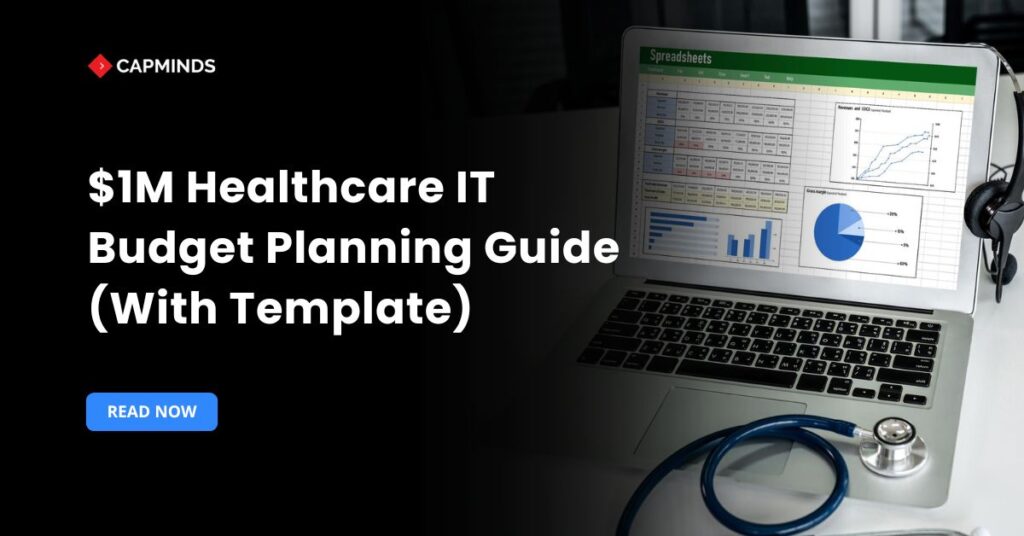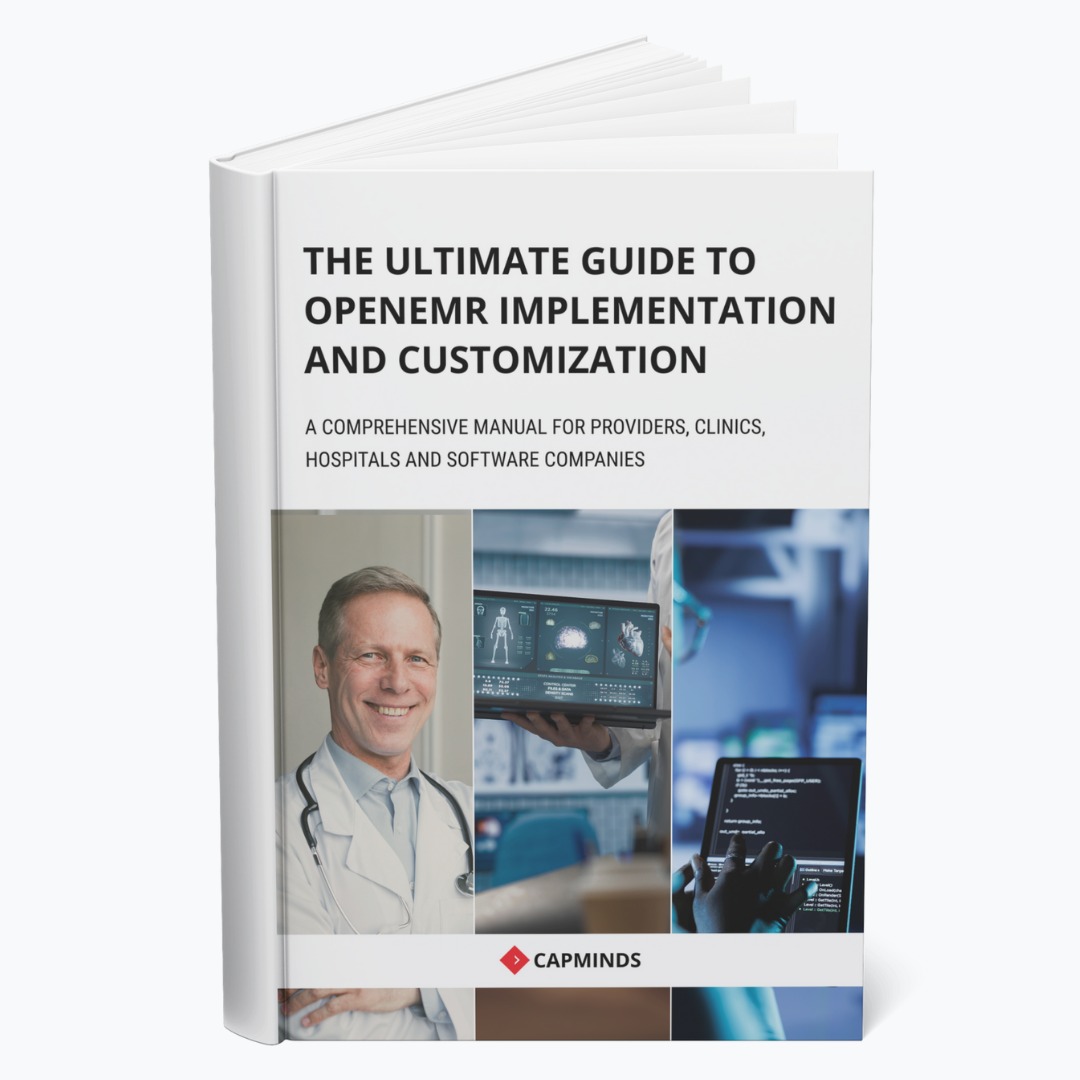$1M Healthcare IT Budget Planning Guide (With Template)
The global healthcare IT market is expected to be worth $231.2 billion by 2025, with a substantial percentage of the investment going into digital transformation, cybersecurity, and value-based care models.
You’ll find a comprehensive IT hospital budgeting guide here, including a detailed breakdown of all expenses to be incurred, a well-planned distribution of the $1 million budget across IT categories, and a budget monitoring and revision plan for the entire year.
What is Budget Planning for Healthcare IT?
Healthcare IT budget planning includes developing a detailed budget for financial resources within a healthcare company, including hardware, software, staffing, and other IT expenses. It is a critical procedure that must align with the organization’s goals, support operational effectiveness, and improve it.
Why is Budgeting Essential in Healthcare IT?
Healthcare organizations should prioritize IT budget planning to support smooth operations, informed decision-making, and long-term financial stability. This enables organizations to allocate resources that connect financial goals with operational strategies, leading to enhanced patient care.
7 Steps for IT Healthcare Budget Planning
1. Define Strategic Goals
Start by defining the organization’s goals and objectives and how IT may help them. This includes understanding the demands of various departments (e.g., clinical, administrative, and patient services) and the impact of IT on patient care, efficiency, and income.
2. Review Current IT Infrastructure
Analyze the existing IT to know what resources are allocated and the key areas for optimization. Identify the trends to spend on the IT hospital budget, such as increasing costs in specific areas.
3. Forecast Future IT Needs
Anticipate future IT needs, considering the growth, volume of patients, new projects, technology updates, and trends in the industry. Consider factors such as EHR/EMR installation and upgrades, telehealth, RPM, data analytics, artificial intelligence, and cybersecurity solutions.
4. Develop a Comprehensive Budget Plan
Develop a detailed budget proposal that includes all the IT spending categories, such as software, hardware costs, infrastructure, maintenance, support, IT personnel costs, and cybersecurity costs. It requires in-depth research by comparing the cost of different IT solutions and vendors to find out the cost-effective way to implement an IT setup in your hospital.
5. Review and Prioritize
Review the budget proposal with key stakeholders to determine whether they align with your organization’s goals. Evaluate the healthcare ROI and prioritize IT projects to determine whether the resources allocated would play an effective role.
6. Obtain Approval
Conclude the budget with appropriately assigned funds for IT expenditure categories. Obtain budget approval from the relevant decision-makers within the organization.
7. Monitor and Adjust
Regularly track IT expenditures with your budget and implement changes as required during the budgeting timeframe. This includes monitoring actual expenses, recognizing variances, and implementing required adjustments to the budget. Consistently review the budget, solicit user feedback, and adapt it to reflect changing IT requirements.
By taking these steps, healthcare companies can create a complete and effective IT budget that aligns with their strategic objectives and ensures that IT investments are used properly.
Related: Healthcare IT Budgeting: What You Should Spend On in 2025 (And What to Avoid)
Key Elements for a $1 Million Healthcare IT Budget
1. Infrastructure & Hardware
Servers for storing physical or cloud-based patient records and databases. Equipment such as routers, switches, and firewalls for secure network connectivity. Devices for working purposes, such as laptops, tablets, and desktop systems; network-attached storage and storage area networks for cloud backups; and printers and scanners for handling documents in hospitals.
Investing in hardware is crucial since it supports daily operations and clinical processes. Requires regular upgrading to avoid performance downtime. These serve as solid bases for the EHR and EMR systems.
2. Software Licensing
Epic, Cerner, athenaHealth, and various other vendors offer EHR/EMR software solutions. Adopting practice management technologies, such as appointment scheduling, billing, and claims processing. Microsoft 365, Google Workspace, and other needed software are examples of productivity aids. SQL servers and data analytics systems require database licenses.
From patient engagement to backend reporting, software handles it all. Licensing guarantees legality and access to support. Make sure that systems are compliant and updated.
3. Cybersecurity
Firewalls and antivirus software must be installed on every system. It uses Multi-Factor Authentication and data encryption to protect against cyberattacks. This comprises SIEM, testing, and security audit trails.
Healthcare firms must employ cybersecurity solutions because healthcare data breaches are serious. HIPAA and other data restrictions protect patient information. Effective security measures reduce the legal penalties.
4. Staffing & Outsourcing
Budgeting for staffing includes costs spent for administrators, data analysts, Internal and External IT staff salaries, consultants for cloud migrations, EHR, and training programs. Skilled staff need to manage systems, respond to incidents, and plan for improvements. Training provides staff to stay updated with evolving technology.
5. Software Applications
Healthcare organizations require digital transformation, such as telehealth platforms, mobile apps, patient portal software, interoperability, and API solutions. IoT devices include wearables such as heart rate monitors and blood pressure monitors.
Data analytics includes artificial intelligence and machine learning for accurate diagnosis and patient care. These applications drive efficiency and better patient outcomes. They support modern healthcare trends like remote patient monitoring.
6. Maintenance & Upgrades
Healthcare organizations must pay for hardware repairs or replacement. They should have changed the software version and looked into service agreements and warranty extensions.
This avoids major failures or downtime and assures compliance with new laws. Regular maintenance prevents significant damage to the software.
7. Contingency & Emergency Fund
Unexpected expenses, which included cybersecurity solutions, sudden changes in regulations, emergency replacements, and implementing new technologies. Healthcare organizations must be prepared for unexpected expenses, and the process must continue without waiting for approvals, as it may affect the organization’s flow.
Make Smart IT Investments with CapMinds Healthcare IT Consulting
As you plan your 2025 healthcare IT budget, choosing the right technology investments is key to long-term success. CapMinds helps healthcare organizations focus on what truly matters: smarter systems, seamless workflows, and sustainable growth.
Here’s what you should invest in and how we help:
- Custom EHR Solutions – Streamline documentation and align with your clinical goals.
- Interoperability & Integration – Avoid fragmented systems with secure, scalable data exchange.
- Telehealth Platforms – Support hybrid care models and boost patient engagement affordably.
- Healthcare Analytics – Turn your data into actionable insights that guide better decisions.
- Revenue Cycle Optimization – Improve billing accuracy and increase financial returns.
Why CapMinds?
We help you avoid overspending on unnecessary tech and guide your investments toward scalable, compliance-ready solutions.
With our consulting expertise, automation tools, and healthcare IT insight, you’ll be equipped to make budget-friendly choices that drive clinical and operational excellence.
Let CapMinds be your partner in smart healthcare IT planning for 2025.
Contact us now to get your FREE $1M Healthcare IT Budget Template.


